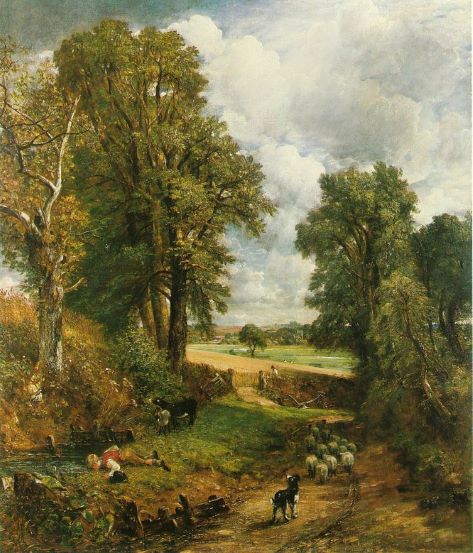
In my first post I traced the rise of painting landscape from direct observation from the Renaissance to the early 19th century. We saw that drawing or painting from nature was increasingly popular, especially in England, but that it was “not important art”. Sketching from nature was done either as a study tool, a scientific curiosity, or as a record of things seen, what photography is for us now. We ended with a look at a presentation work by John Constable, “The Cornfield”, still following all the rules of landscape convention, but infused with the results of years of direct observation of the world.
But the fascination for the natural world had its own kind of importance, outside the hierarchy of proper subject matter. A pure landscape painter like John Constable, though he always produced grand studio works for the annual Royal Academy exhibition, was almost certainly more excited by his “studies” done in the fields around Dedham, and along the south coast. At this same time, amateur artists by the hundreds were heading for the Lake District to “find the picturesque” and paint it.
By the next generation the traditional hierarchy of subject matter was being challenged from many sides. Young artists like Courbet were presenting the academy with revolutionary works featuring the poor, the ugly and the scandalous. Landscape painting profited from this upheaval, as more and more artists, like Theodore Rousseau, spent their days in the woods and fields, not as studies for monumental works, but for the joy of contact with nature.
Courbet scandalized the French Academy by mounting a competing exhibition of works refused admittance to the annual salon, the “salon des refuses”. Following his example, the Impressionist group put on its own exhibition without even trying for admittance to the academy show. What Parisians saw there was something totally new in freshness, coloring and lack of monumentality or noble themes. Even more revolutionary was what the work said about the nature of perception and reality. We can see this by comparing an early work of Monet to that of his teacher Boudin.
The Boudin scene is a marvelous study of light and mist at a moment, a paradigm of plein air immediacy. But what Boudin sees, his pupil Monet really understands in its full implications. Throughout his long and productive life, Monet saw the visual world as impulses of light, the raw material of perception, only later being interpreted by the mind into what we call “the real world”. It was a period when science was giving the artists new insight into the nature of vision, and simultaneously providing them with a palette of bright mineral colors not previously available. The combination was mid-blowing making traditional painting look muddy and dull by comparison.
Where for centuries the Academies has rejected and ignored any artist who didn’t fit their definition of noble art, now the tables were turned, and the artists at the cutting edge of artistic change could simply ignore the academy.